Love for local food shows no signs of slowing

As we pass the fourth anniversary of the COVID-19 pandemic arriving on our shores, the lessons we have learned can only be described as staggering. Among those many learnings was the importance of our food supply chain, and how much Canadians have come to appreciate the food our country grows, raises and processes for store shelves here and aroundthe world. While the interest in local food began pre-pandemic, it has grown even more since 2020 and is showing no signs of slowing.

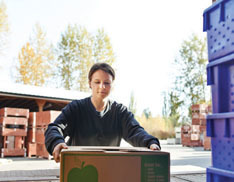

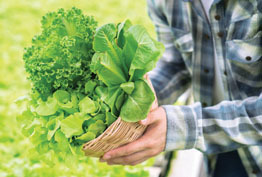
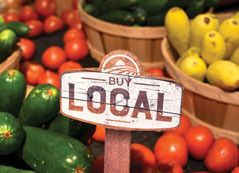
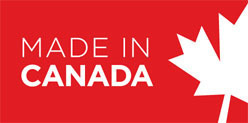
The proof is out there
In 2022, Dalhousie University’s Agri-Food Analytics Lab conducted a study with Angus Reid to examine local food perceptions from across the country. The study found that support for local foods is important to most Canadians, with Quebecers the most committed.
The survey also found that British Columbians and Quebecers were the most likely to consider local food products when managing their meals, with 17 per cent reporting they prioritize local foods for most meals every week. Women are slightly more inclined to consider local food to be important versus men, but the percentage difference was less than five per cent, and education and income were not significant determinants when it came to local foods.
“The fact that socio-economic determinants are not significant is a little surprising,” says Janet Music, research associate at the Agri-Food Analytics Lab at Dalhousie University, with the report’s release in 2022. “It is known both Quebec and British Columbia have had many conversations about the localization of food systems, and it shows in the data.” The survey also asked respondents for the reasons why they choose local foods, and the top reason was to support farmers, followed by supporting the local economy, then to support environmental sustainability.
A year later, the 2023 Survey on Consumer Perceptions of Food by Agriculture and Agri-Food Canada in March found that 86 per cent of respondents sought locally produced food at least sometimes; 97 per cent reported purchasing these foods at least sometimes; and 50 per cent said they would be willing to pay more for local products. The reasons for purchasing local foods were similar to Dalhousie’s findings: 74 per cent of respondents did so to support the local economy. As well, 60 per cent of respondents saw local food products as fresher, 32 per cent believed that local food had a lower environmental impact, and 21 per cent saw local foods as a healthier option.
Despite the cost pressures consumers are facing due to inflation, the desire to buy and enjoy Canadian-grown and -made foods remains high.
Supporting small suppliers
Loblaw Companies announced its new Small Supplier Program in November 2023 to provide “additional support and resources to more than a thousand existing Canadian growers, bakers, vintners, and local product creators, and making it easier for new suppliers to work with Loblaw.”
Launched in early 2024, the Program is designed to help small suppliers and producers through better processes, faster payments, guaranteed six-month listings and support.
“Small businesses are the lifeblood of our economy, and the path to this country’s successful future,” says Per Bank, president and CEO, Loblaw. “Every day, we experience the terrific power of innovation in many family-owned, traditional and local producers, and we want to assist their ability to develop new products and generate a truly diverse and inspirational range. By making the onboarding and retailing process easier for small businesses, our goal is to reduce their time and costs, to the benefit of all Canadian customers.”



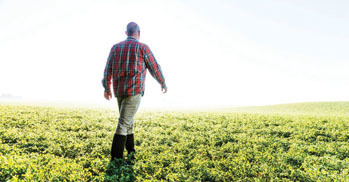


Loblaw is Canada’s largest agri-food customer, with existing relationships with over 1,000 small businesses, including local growers, bakers, vintners, and product creators.

“The fresh fruit and vegetable industry is a fast-paced business environment which represents many small local growers and business owners,” says Ron Lemaire, president, Canadian Produce Marketing Association. “Providing these small businesses with the opportunity to access the market using this program can be a catalyst to their success.”
Local finds a home
Pattison Food Group (PFG) has made local foods a priority, with local products found in every aisle of its stores. “We carry more than 2,500 locally made products from more than 2,000 local growers and producers,” says Dan Hansen, vice president, centre of store. “Within our Western Family brand alone, we proudly have over 1,000 locally made products available.”

PFG added dedicated local sections in stores several years ago as a way to showcase the items made at home. The company’s commitment to buy local first is also supported by marketing campaigns that feature the products made by farmers and producers. “Customers can find a wide array of ‘Made in Canada’ products with full distribution as part of our regular product mix right up and down every single aisle,” says Hansen.
Those dedicated sections have been a hit with consumers in PFG stores across Western Canada.
“We sell Spenst Bros. pizzas in Manitoba, Oso Negro coffee roasted in Nelson, B.C., and Tofino Kombucha over on Vancouver Island,” notes Hansen. “All these products serve their communities and fulfill a need or fit the needs of the consumer they serve. While the categories change by location depending on the suppliers within the community, none is more important than local fruits and vegetables when in season.”
PFG understands each market it serves has its own community of local suppliers, manufacturers and producers. “Those suppliers often form great relationships with our stores in their town,” says Hansen. “Occasionally, products may not be relevant to all communities, or the supplier may not have the scale to expand to the entire fleet of a retailer of the Pattison Food Group’s size but is looking for a venue to sell its products in. Our stores often provide that opportunity.”
Hansen says the learning that has come from working with local food producers has been invaluable to PFG. “We have seen how incredibly innovative local Canadian companies have been over the past few years to make more products available for customers to buy. Having products made right in our backyard means less risk of supply challenges and fresher products for our customers.”
Hansen says some people do not comprehend the magnitude of the Canadian supply community. Local doesn’t always mean small. “Local” is found in many store categories at PFG, with some of the retailer’s largest suppliers producing foods closer to home. “The fact is that some of our largest suppliers are providing perishables close to home – products like our frozen fruits, milk, cheese, eggs, Western Canadian beef or local flowers. Local doesn’t always mean a supplier who is manufacturing a niche product in small batches.”
However, PFG is ready to work with vendors of all sizes. “The cost for small local vendors to manufacture in small batches is often higher than the CPG companies that produce to scale, and yet customers understand this and are willing to pay for products made close to home,” adds Hansen. “I always find it exciting when you see a small local vendor who creates sufficient scale to provide products across the company or expand to a national listing.”

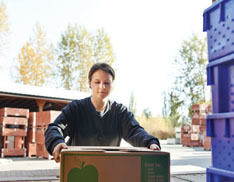
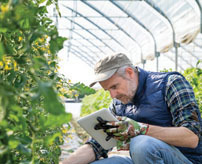

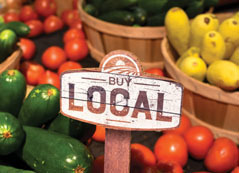
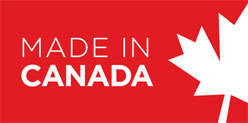
Connecting growers to customers
Metro Ontario has been working hard to bring locally grown and produced products to its customers, with its local food program now featuring over 1,200 products from more than 170 suppliers.

“Through our Locally Sourced program, Metro discovers and supports local food vendors across seven locally sourced regions in Ontario,” says Paul Grossi, senior director of meat and seafood merchandising, team lead local program for Metro Ontario. “We have traveled across Ontario, meeting local innovative entrepreneurs, and providing support and assistance to ensure they are successful. We offer guidance in packaging, labeling, distribution, marketing, flyer, store execution, etc. We have a great partnership with the Ontario Ministry of Agriculture and Food and Rural Affairs (OMAFRA), working together to find and support local vendors in Ontario. Metro is committed to showcasing local products in its stores, which in turn helps strengthen relationships with local food suppliers.”
Grossi says Metro’s local purchasing policy is designed to make it easy for customers to find local products that meet their needs when it comes to freshness, variety, quality and labeling. For suppliers to participate, their products must be local and eligible for certification by Foodland Ontario, and they have to deliver to all the stores in their region. Finally, the product selection in Metro’s regions must be unique and distinctive, he explains.
“For Metro, an innovative supplier is one who offers a product that stands out for its originality, packaging, recipe, ingredients, or function, one that originates from environmentally sound production practices, or one grown through practices that provide added value in terms of appeal (e.g., taste, shape, colour, conservation, exclusivity, etc.) or market availability.”
Metro’s local food program has been a great learning experience for both the company and its suppliers.
“Local entrepreneurs are very innovative and passionate about their products,” says Grossi. “We have learned that collaboration and communication are key to success for both parties. We need to be flexible and to adapt. Local food companies may encounter many unique challenges and limitations compared to larger suppliers. For example, they may have limited production capacity, seasonal availability, and delivery constraints. We work together to ensure both our goals are achieved.”
Grossi points to one of Metro’s suppliers as a standout example of its local food program. Metro introduced Yolanda’s Lasagna (Mercanti Specialty Foods) into the Escarpment region. The products were such a hit that Metro expanded it into other local areas and the success of the product continued.
“With this great following, we made the decision to offer this product to all Metro locations in Ontario,” says Grossi. “Sales are up triple digits over last year.” Another local product, Pepper North Hot Sauces, also enjoyed incredible success, and the line is now sold in all Metro’s stores.

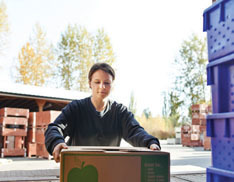
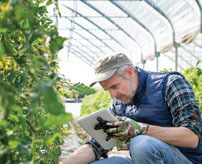

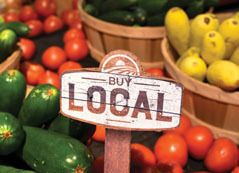
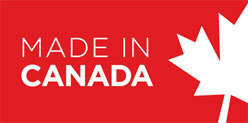
Metro’s local food program is also centred around what its customers want.
“Our customers are delighted to see and to purchase local food,” says Grossi. “The availability of local foods allows our customers to feel a stronger connection to their community and to the people who produce their food. They appreciate the opportunity to support local farmers, processors and businesses, which fosters a sense of community pride and engagement. Consumers gravitate to specific foods that are truly grown and/or produced in their community.”
Canadians want Canadian food
A series of research studies conducted about several of Maple Leaf Foods’ core packaged meat and poultry categories noted that “identification of a product or brand as having Canadian provenance consistently ranked within the top five of all attributes.” And according to ongoing tracking from Ipsos FIVE, “Made in Canada” remains the number one claim influencing food choice for consumers – for any consumption occasion – in Canada, says Maple Leaf.

“At Maple Leaf Foods, we understand the importance of having a team dedicated to consumer needs and inquiries,” says Patrick Lufty, senior vice president, retail marketing. “We have a longstanding consumer insights team that responds to and connects with Canadians from coast to coast to coast – to ensure our products are meeting and exceeding their expectations, and to answer any questions or inquiries they may have about our products.”
For Maple Leaf, Canadians’ demand for local food has also led to significant investment in the country’s domestic food supply.
“Maple Leaf Foods is deeply committed to investing in the Canadian food supply and economy,” says Lufty. “We have commissioned two major Canadian investments over the past few years – Canada’s most advanced fresh poultry processing facility in London, Ont., and an expansion to our Bacon Centre of Excellence in Winnipeg, Manitoba. With this recent investment in Winnipeg, Maple Leaf Foods is shifting $175 million of bacon production from the U.S. to Canada to feed Canadians with domestically produced fully and partially cooked bacon.”
As well, Maple Leaf launched a new made in Canada brand, Fantino & Mondello, in 2023.

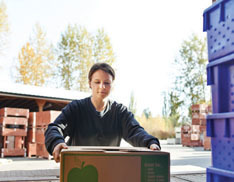
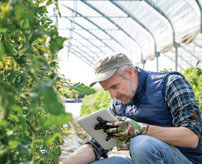
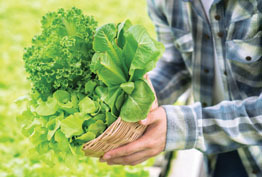
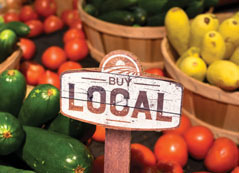

“It is a great example of responding to Canadians’ desire for delicious domestically made products,” says Lufty. “Fantino & Mondello offers authentic Italian charcuteries with a modern twist, crafted and made in Canada, and produced from premium Canadian pork. Fantino & Mondello celebrates this unique point of difference on pack, so consumers are aware that they are buying a product that was made in Canada.”
Lightning in a bottle

For Coke Canada Bottling, local production just makes sense. “We know consumers are increasingly speaking up and seeking out companies that are engaged and active in their community,” says Todd Parsons, Coke Canada Bottling’s CEO. He cites a 2022 Kantar study in which “81 per cent of Canadians said that companies who make sincere efforts and investments into their community deserve their loyalty.”
“As a family owned, Canadian business, we have close, local connections with the communities in which we operate,” he says. “Over the past few years, we’ve invested to grow our local footprint.” The company participates in the “Ontario Made” program and develops many local connections in the communities where its businesses are located.
“We participated in #ReadyBrampton, the Brampton Board of Trade’s campaign encouraging Bramptonians to support local. The campaign featured our own employees who work in Brampton, and built off of our national #LoveYourLocal campaign launched during the pandemic in support of our local customers. For the past several years, we have run our “Your Local Bottler” marketing campaign, recognizing and celebrating the efforts of our hard-working frontline teams, and reiterating our local presence to our stakeholders, customers and overall community. Our success is one of shared success with our communities.”
In 2022, Coke Canada also announced a $34 million investment into its Lachine, Que., manufacturing facility for a new, state-of-the-art line.
“The new line, opened in September 2023, enables more local production of beverages in cans, and adds capacity to our facility, allowing us to produce more Aliments du Québec-certified products,” says Parsons. “This local investment helps us meet the growing demand for more local products, given the positive momentum we have experienced in Eastern Canada, particularly in Quebec.”
Coke Canada still has big plans for increasing its local presence in Canada. The company’s owners have invested more than $220 million in local manufacturing as they build their multi-generational business.

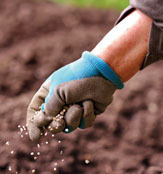
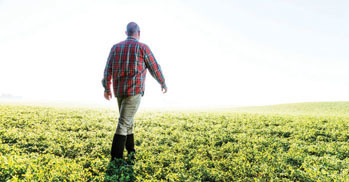


Jennefer Griffith, Executive Director, Food Processing Skills Canada
“We’re on a journey to be the leading beverage partner in Canada, and one of the ways we’re driving our business forward is by investing in growth to meet the diverse needs of Canadians,” says Parsons. “We are investing to increase the availability of products we make in Canada. Coke Canada Bottling is your local bottler here to manufacture, distribute, sell and merchandise beloved Coca-Cola brands in Canada, through our more than 50 local sales and distribution centres and facilities.”
Putting Canada in the pantry

Conagra Foods is building its Canadian presence because it recognizes the demand for foods made here. Paul Hogan, vice president and general manager, Conagra Brands Canada & International, notes that 53 per cent of consumers in Canada prefer to buy local, according to Statista in 2022; they also look for local products on the shelf.
CHEF
A Brambles Company
The waste in your supply network is a measure of its inefficiency.
When you choose to use CHEP’s pooled pallets and containers, you become an essential part of one of the world’s largest circular economies. This means you benefit from less unnecessary waste and greater supply chain knowledge and experience, adding more value than anyone else could.
Expect more with CHEP.
See how

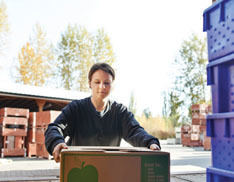
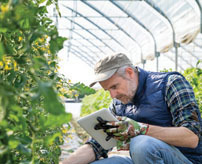
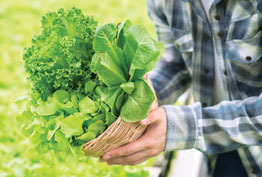
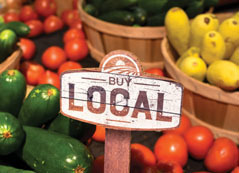
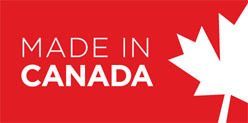
“Evaluating labels has never been more important for Canadians, particularly with the passing of legislation that will see 2026 Front of Package (‘FOP’) labels added to many packaged foods and beverage products,” says Hogan. “We know ‘Made in Canada’ ranks as the most important label when Canadians are assessing food and beverage. Canadians are a proud group, and we anticipate they will continue to look for locally made food options.”
Aylmer is one of the local brands Canadians have turned to, decade after decade – celebrating 120 years in 2023.
“This milestone means that Aylmer has been in Canadian kitchens longer than many common household items,” notes Hogan. “It may not be new or trendy, but tomatoes remain a critical part of many favourite recipes. Aylmer tomatoes are made at our Dresden, Ont., production facility using tomatoes sourced from farmers in southwest Ontario, and are canned in 24 hours.”
Conagra believes so strongly in Aylmer and its value to Canadians that in 2023, the company announced a multi-million-dollar investment to its Dresden tomato processing plant. “The investment includes state-of-the-art upgrades to the plant, designed to streamline operations and boost production across tomato brands: Aylmer, Hunt’s and RO*TEL,” says Hogan. “Thanks to these upgrades, we were able to boost production by 25 per cent last pack season and produce RO*TEL in Canada for the first time.”
The company sees the value in local food production now and in the future. Besides manufacturing facilities in Dresden and Boisbriand, Que., it uses co-manufacturers to help increase its Canadian-produced footprint.
“We continually revisit the capabilities of our plants to see what additional products in our portfolio can be produced locally.”
Government steps up
The drive for local food extends beyond consumer demand. Governments at all levels are seeing the economic impact of local food production and processing.
The Government of British Columbia made several investments into its local food industry in 2023, including up to $7.5 million for Surrey’s Punjab Milk Foods, the manufacturer of made-in-B.C. brand Nanak Foods. The BC Manufacturing Jobs Fund will help the company establish a new 293,000 sq. ft. South Asian dairy product processing plant in Surrey, B.C.
In Alberta, the provincial government launched its voluntary “Made-in-Alberta” labeling program in March 2023. The program, managed by Alberta Food Processors Association (AFPA), allows Alberta producers and processors to use the label on their locally made products, which helps consumers identify food products made in Alberta. The online catalogue features dozens of producers and processors from across the province.
The Ontario government committed to increasing local foods in the public sector, such as procuring local food products for use in hospitals, long-term-care homes and schools. Thunder Bay’s Pioneer Ridge long-term-care home significantly increased the number of local offerings in its food service. In 2022, Pioneer Ridge estimated that 27.5 per cent of its menu was from locally grown food.
At the federal level, the Government of Canada has made many investments to support Canadian food producers. Among them was the launch of the new Dairy Innovation and Investment Fund to support Canada’s dairy industry. Canadian dairy processors will be able to access funding for projects that help manage solids non-fat (SNF) surplus, including modernizing, replacing and increasing processing capacity.
The Government also unveiled the new Canada Brand program in 2023 to help better position Canadian agriculture and agrifood businesses in the global marketplace. Canada’s locally grown and processed foods are well-respected around the world, with exports continuing to increase – reaching over $82 billion in 2021 and passing a previous target to grow agri-food exports to at least $75 billion by 2025.

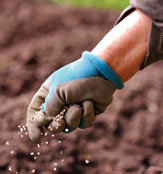
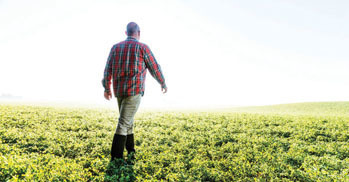


Meeting the demand
While Canada’s food production and processing sector is showing strong growth, are there enough people to meet the demand for labour?
In 2022, the industry employed approximately 300,000 people and it is estimated that, by 2030, the number will grow by nine per cent. While an additional 25,000 people may not seem like much, it is when the retirements predicted over the same time are factored in. Food Processing Skills Canada is expecting over 65,000 workers to retire – and that’s on top of the 50,000 vacancies the sector is already facing.

“In total, the Canadian food and beverage manufacturing industry will need 142,000 new people, or almost 50 per cent of the current workforce, between 2023 and 2030,” said Jennefer Griffith, executive director, Food Processing Skills Canada, in December 2023.
That gap has a tremendous impact on the economy. Research by Food Processing Skills Canada conducted in 2020 found that “a single unfilled position in the food and beverage manufacturing industry costs businesses as much as $190 per day in lost net revenue.”

The organization sees that newcomers to Canada offer an excellent opportunity for the food processing industry. With the wave of retirements and fewer young people joining the food industry, new Canadians are finding a home in the sector. According to Food Processing Skills Canada, immigrants “currently represent 35 per cent of the industry’s workforce, which is nearly 10 per cent higher than in the Canadian labour force.”
“Canada’s food and beverage manufacturing industry is a global leader in safe food production,” said Jeff Purcell, vice president of operations, Champlain Seafood, and board director, Food Processing Skills Canada, in December. “It is time for us to also be a global leader in workforce development. We have the research capabilities, the resources, and the leadership to implement solutions and be the very best.”


